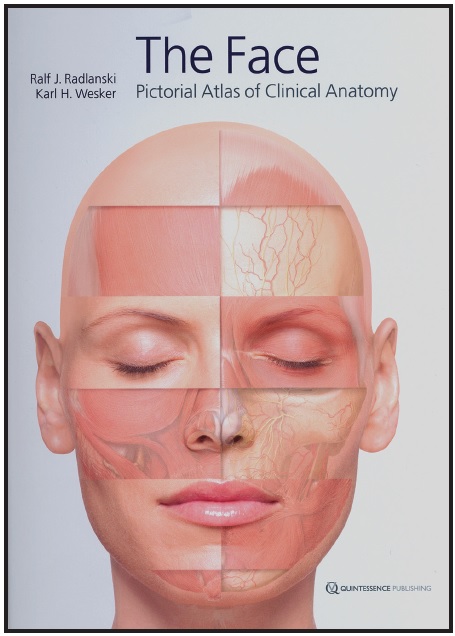DR. RALF J. RADLANSKI and KARL H. WESKER
366 pages, 406 illustrations. $178. 2012.
Quintessence Publishing Co, Inc., 4350 Chandler Drive, Hanover Park, IL 60133.
(800) 621-0387; www.quintpub.com.
It was a pleasure to review this comprehensive and exquisitely illustrated anatomy text. It would make a valuable addition to a dissection class, or could even be used in lieu of cadaver dissection with students learning the anatomy of the head and neck. The book is so detailed that it would be appropriate for physiology graduate students; dental students; oralsurgery, plastic-surgery, and otolaryngology residents; and even massage therapists.
Sections on surgical planning include morphometric and cephalometric points, as well as "golden proportions" of ideal beauty. I especially appreciated the sequences where the skin, fat pads, muscles, lymphatics, and arterial and venous systems were painstakingly layered then dissected away in anterior, lateral, ventral, and posterior views.
Although the illustrations, beautifully rendered by Karl H. Wesker, are predominant, the text is straightforward and crisply edited, including useful pearls on the nerves and complexes that must be preserved during surgical procedures. An example: "If there is an imbalance between the dental occlusion and the excursion movements of the mandible and the function of the temporomandibular joint, not only the closely related muscles of mastication are disturbed but also the muscles of the neck may react with painful myalgia" (p. 133).
The illustrations of fat-pad distribution are particularly well done--especially in the section on aging, which demonstrates how fat pads herniate into various compartments and how facial proportions alter over time. A facial-expression sequence showing which muscles move in different directions to create frowns, furrowed brows, a pinched face, smiles, and other expressions is also noteworthy. Cross-sectional anatomy is helpful when learning how to interpret computed-tomography scans, and the anatomical sections will help the reader understand which features are on the same plane.
Similar articles from the archive:

For plastic surgeons and others performing cosmetic eye surgery, the section on periorbital and eye anatomy will illuminate the links among various muscular, fatty, and vascular compartments. Dental and oral-surgery residents will appreciate the illustrations of dental anatomy and pathways of the odontogenic spread of infections, as well as an extensive section on the anatomy of the TMJ.
This text does have a few drawbacks, which are frankly disclosed in the foreword. Only the ideal anatomy of the Caucasian female face is presented (the same subject is illustrated throughout the book); there are no allowances for racial or sexual differences. This is not an atlas of pathological conditions; it describes only normal anatomy. But what it does describe, it does exceedingly well. Radlanski and Wesker have produced a clear, concise, and beautifully illustrated book for anyone learning or reviewing the normal anatomy of the head and neck.
SARAH C. SHOAF, DDS, MED, MS

